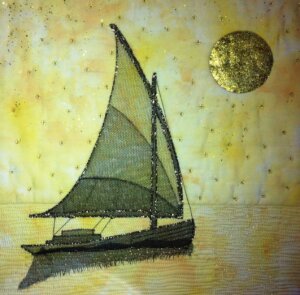Pat Archibald’s talk had us spellbound from the start with her colourful images of craft markets and African artisans at work. The images were taken during a visit she made with then owners of The African Fabric Shop, Maggie & Bob, who were travelling around Ghana buying goods from various makers, whom they knew by name.
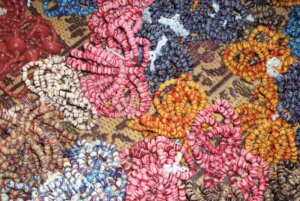
“Trash to treasure’ – or Making Something from Nothing Much – is exactly what these skilled workers do. Materials are either grown locally or are recycled from other people’s rubbish. Labour is all manual, of course; there is no automation, since electricity supply – where it exists at all – can be intermittent, or just too expensive. People show remarkable ingenuity in repurposing items in their processes, such as setting their dye cauldrons on disused car engine blocks, and rolling out grasses for baskets on an old flip flop sole.
Pat’s talk began with makers of the vibrant printed, batik and woven cloths typical of the region.
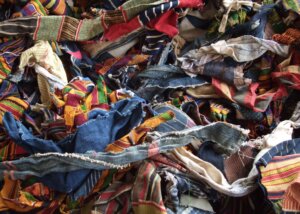
Rags used for cloth making
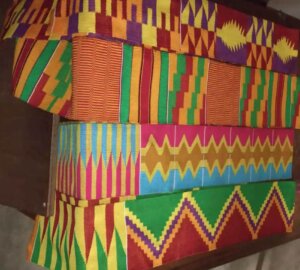
Kente cloths are woven in narrow strips
We saw (indigo) dyed and block printed cloths being laid out in the sun to dry. Print blocks are carved from upholstery foam or calabash gourds, and woven cloth starts with scrap fabric sold by a local dealer. A bit later on in the talk we were shown the weaving sheds where kente cloth is woven – in narrow strips using traditional, meaningful patterns – which are then sewn together. Men’s ceremonial smocks are made from these narrow strips and embroidered on a treadle sewing machine (that really takes some skill!).

We learned about different bead making processes: glass beads are made with ground glass from recycled bottles (no PPE available for breaking and grinding the bottles), plastic beads from landfill plastic and brass beads are made using the lost wax (beeswax) technique.
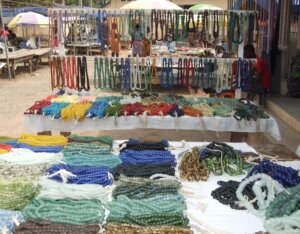
Bead market with glass beads in the foreground
Stunning baskets of many shapes, colours and patterns are woven from elephant grass dyed in large cauldrons.

Dyeing elephant grass

Handwoven baskets comes in many sizes and shapes
Finally, Pat shared some of her interpretations of these artisans’ work:

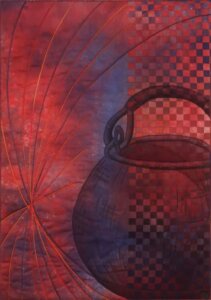
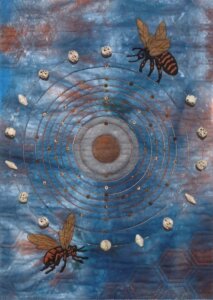
Not only was Pat’s talk a feast for the eyes, it was a real eye-opener as to what can be achieved from such minimal resources through work, ingenuity and imagination.
* * * *
By all accounts, Saturday’s workshop was full of useful techniques and very inspiring. Looking forward to seeing the pics.
